Aquaponics is rapidly growing in popularity; it’s an efficient and effective way to grow food. But, even better, is the fact that anyone can try it! As soon as you start looking into aquaponics you’ll hear terms such as ‘flood and drain aquaponics’, or ‘ebb and flow’.
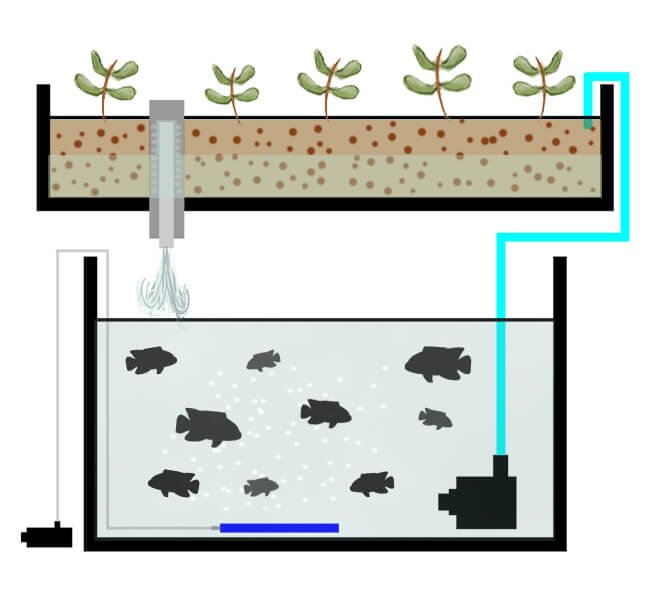
As with everything in life there are different ways to achieve any goal. Flood and drain aquaponics is, undoubtedly, one of the most popular approaches for DIY.
Let’s find out what’s really involved and if this is the right choice for you.
The Principles of Flood And Drain Aquaponics
To create an aquaponics system you’ll need several supplies, to take the water from the fish tank to your growbeds.
You can choose to add a filter and a biofilter to your system. You’ll also need to add grow media to your grow bed, this is discussed in more detail shortly. The growing media allows the plants to expand their roots and reach the nutrient-rich water.
But, perhaps the most important part of your system, is the bacteria which live on the growing media. These convert the fish waste (ammonia) into nitrates; which the plants feed on. The plants clean the water, ensuring it is healthy for the fish.
A well-run system requires very little maintenance.
I’m sure you’re wondering how flood and drain aquaponics fit into this. There are two options when it comes to providing your plants with the water they need to survive and grow:
-
Flood & Drain
A pump takes the water from the fish tank into the grow bed; it will pump enough water into the grow beds that almost all the grow media will be under water. You can set your own level of exactly how high this is. The water will then drain back into the fish tank with the help of a siphon.
At the stage the siphon is working, the pump still pumps water in the growbeds. But the rate at which the water gets removed is faster than the rate the water gets pumped in. This, way the level of the water will go up and down.
It’s that simple; once you’ve set the system up you can leave it to run by itself.
-
Continuous Flow
The alternative is to have a continual flow of water, this never floods the grow beds but does allow the roots of the plants to grow into the water and take the nutrients they need. I do not recommend this setup because you will have trouble with oxygen supply to the roots.
Different Systems
We’re looking at flood and drain aquaponics. This system works best when the grow bed is positioned above the fish tank; the water can drain back using gravity and a siphon.
But, you should be aware that there can be a few seconds between the pump flooding the grow beds and the water returning; this can make the water level in your fish tank low. You’ll need to make sure it’s not too low.
Here are the most common methods of operating flood and drain systems.
- IBC totes
This is actually my favorite starting point. It’s easy to get your system up and running and you’ll find there are plenty of places where you can get these IBC totes for free. Of course, if you’re getting a used one make sure it is clean before you start adding water, fish, and plants.
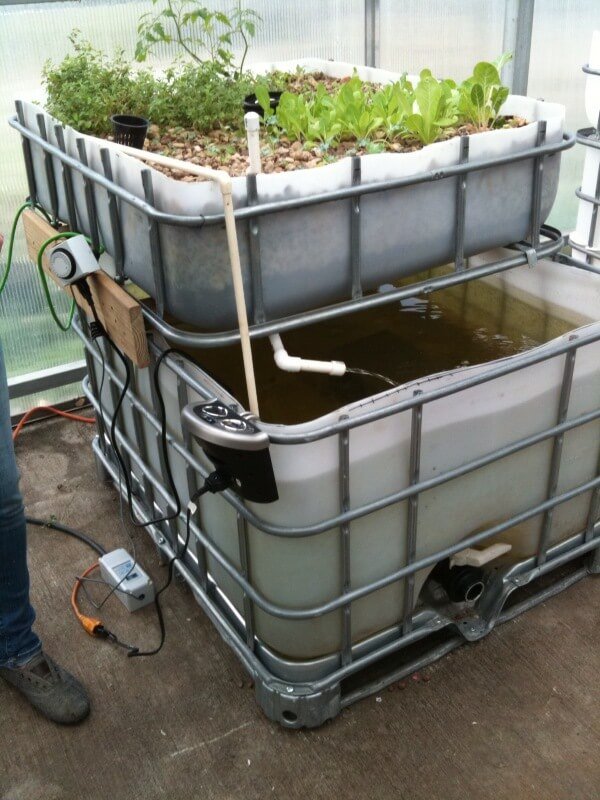
You’ll need to cut the top third off your tote; including the cage. It will then be possible to invert this section and stand it on top of the rest of the IBC tote. In short, you’ll have created two containers, one on top of each other.
Top Tip: It’s a good idea to cut a section out of the front of the lower part of the tote; just enough to enable you to get to your fish.
The fish go in the bottom container, the water is pumped to the top and then cascades back into your fish tank via a siphon; you’ll be aerating the water as you do it. This could save you needing to add an air pump to your setup.
- Barrelponics
In essence, this is actually the same approach as with an IBC tote. The difference is you’ll need a 55 gallon, (or bigger), food barrel. Make sure it is a food barrel as you can clean this and use it safely. If the barrel has had chemicals in you won’t know if they are still present in the plastic or not.
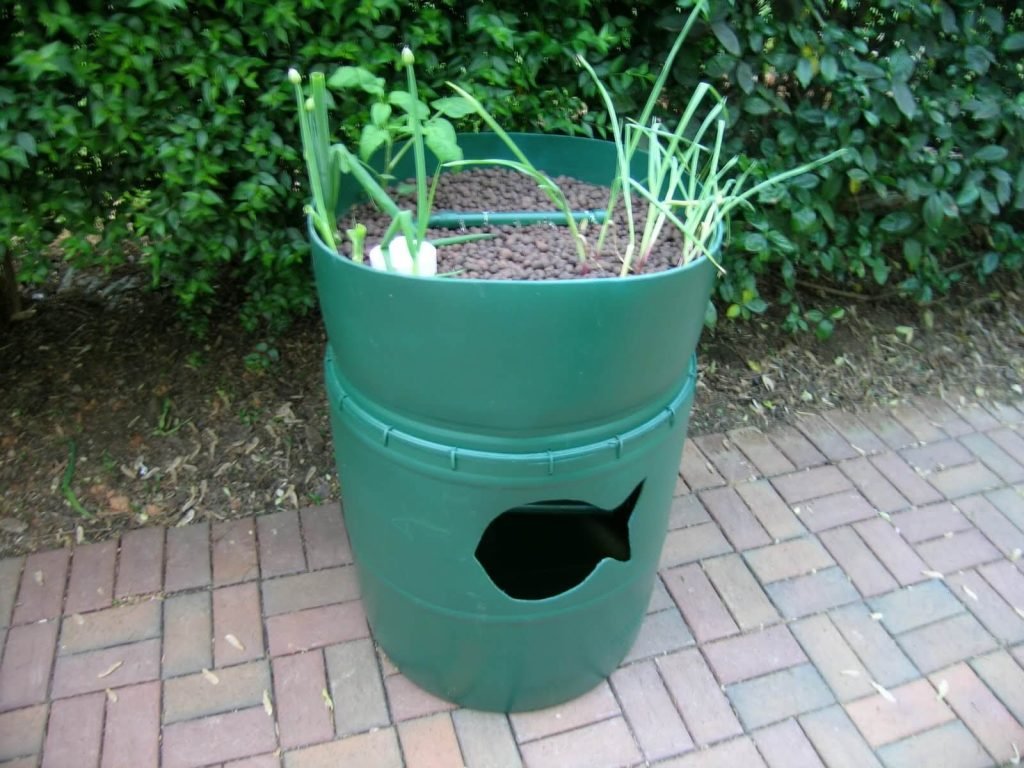
Again, you’ll need to chop the top third off and invert it to create a fish tank and growing bed. You may also need to create a support structure, but that’s a personal decision.
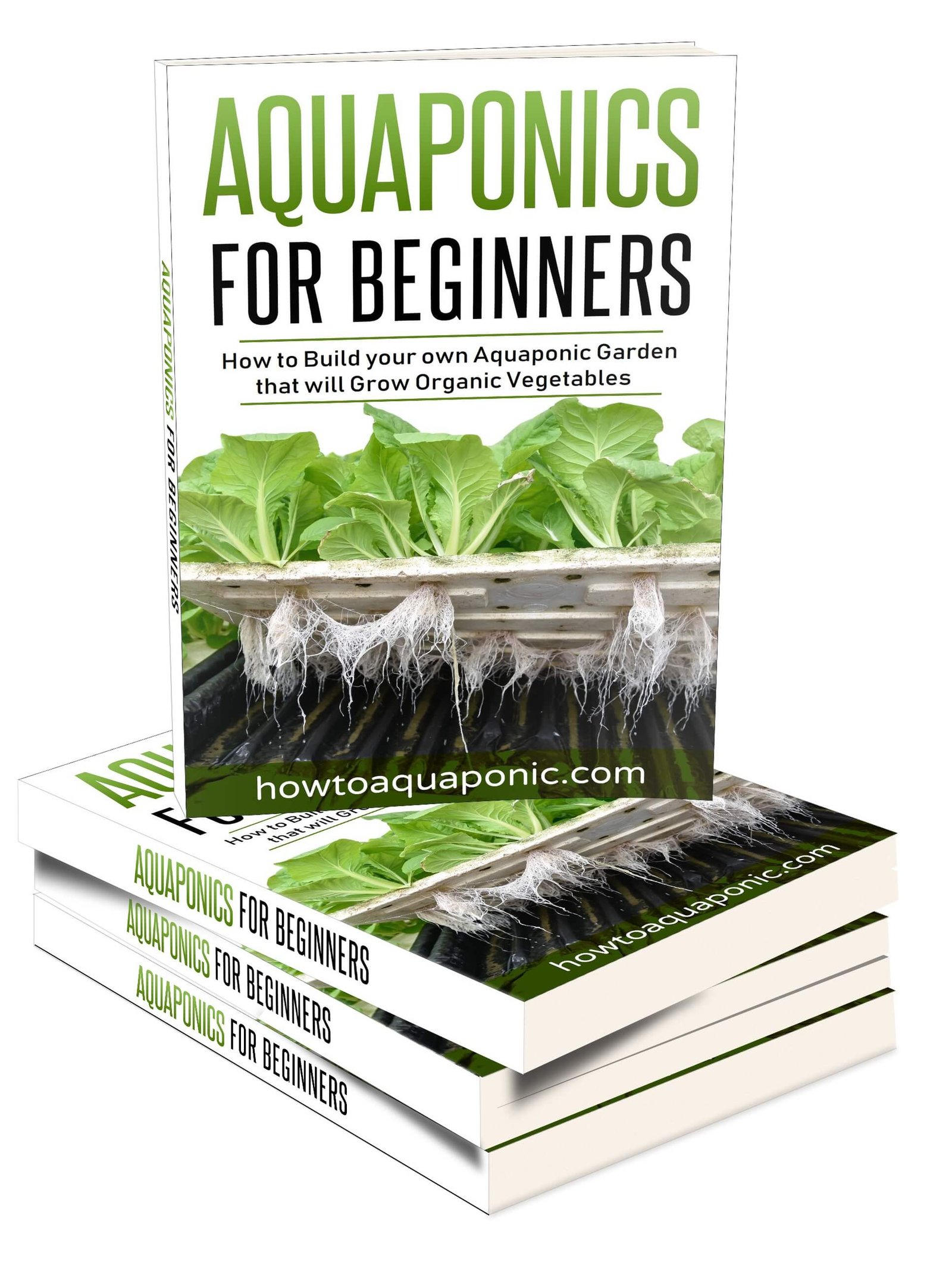 I have written a book that contains all the information you need to get started with aquaponics.
I have written a book that contains all the information you need to get started with aquaponics.
Don’t be the person that makes painful mistakes during your first aquaponics build!
It has 265 pages filled with information about aquaponics. It’s available in paperback or eBook format.
You can buy it here on Amazon.com
Grow media
Now you’ve got a growing container and a fish tank, you’ll need to connect the two with a pump and as little pipe as possible. You’ll then be ready to add your growing media. This is very important; it doesn’t just act like soil for plants; giving them somewhere to secure their roots.
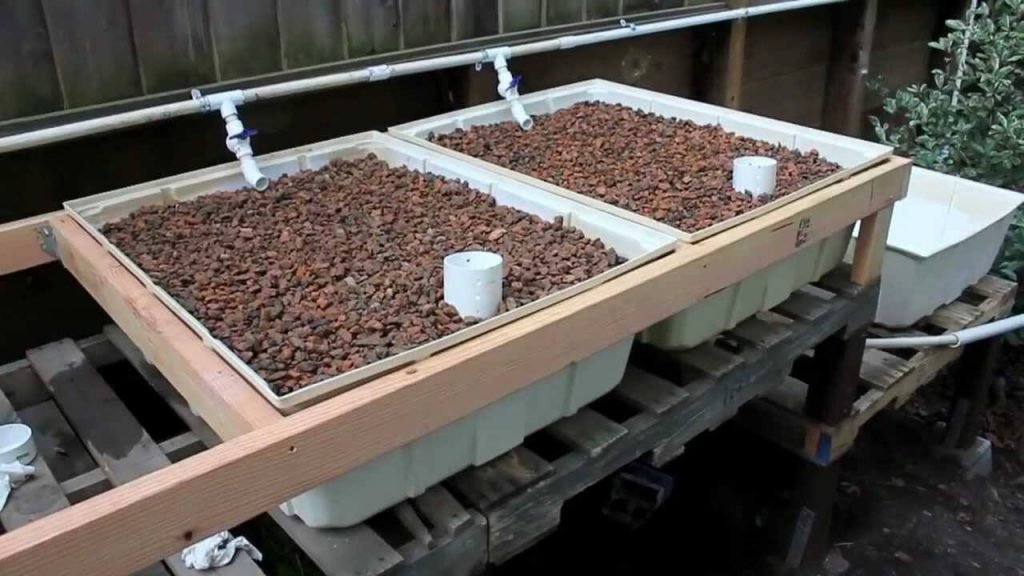
It also provides a home for the bacteria that convert fish waste, (ammonia), to nitrates, (nutrition for your plants).
There are several options for you to consider:
- Clay pebbles (hydroton)
Clay pebbles, also known as hydroton, are very light. They have been artificially aerated to create a porous surface, this increases the space available for bacteria to grow on. Each pebble is about the size of a marble, they are smooth and easy to handle.
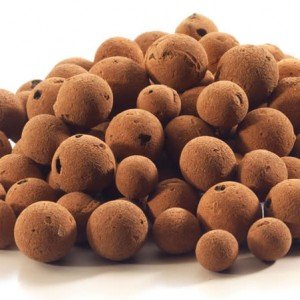
A high pore space but small physical size helps to ensure the water in your grow bed drains back out quickly. It is generally considered environmentally friendly and will allow you to pull plants out easily, including their roots.
It is definitely best suited for short cycles of flood and drain aquaponics, the excellent drainage can backfire in warm climates as it is not good at holding water; potentially leaving your plants dehydrated and wilting.
You should also be aware that the pebbles tend to float for the first few months; increasing the risk of them getting sucked into your pipes and filters.
- Lava rock
Lava rock is created naturally, the lava from a volcano will cool rapidly, this gives no time for the air to escape, effectively trapping it. This is great for aquaponics as the trapped air creates a highly porous surface; increasing the surface area of the rock and making plenty of places for your nitrifying bacteria to live.
You may be surprised to discover that lava rock is actually very light, it’s also pH neutral so won’t affect the balance of your system.
However, lava rock is sharp, it could cut your hands and damage roots; you’ll need to proceed with caution.
- River rock
River rock is usually smooth as it has been eroded by the water flowing over and around it. It comes in a variety of grades but the smallest ones are likely to get into your filters and pipes; causing issues. Medium-sized stones are the best balance for the surface area while not blocking up your system.
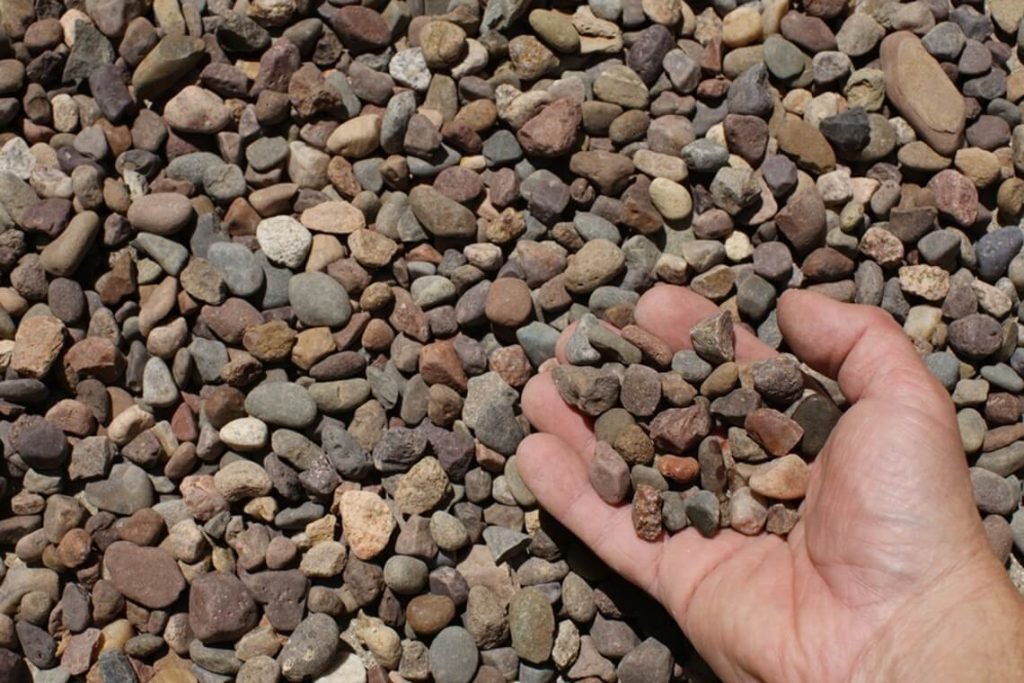
It is important to wash river rock before using it as it will probably have limestone; which can increase the pH of your water. It is also important to remember that river rock is heavy; your growing container and stand need to be capable of supporting its weight.
Siphons
Adding a siphon is critical in draining your growbed. A siphon is used to drain the entire growbed and return it to the fish or sump tank while the water pump is still running.
There are several different types of siphon you can utilize:
- Bell siphon
The bell siphon is the most popular choice. It’s a tube that goes through the base of your growing container, the tube extends upwards, the top should be approximately 1 inch below the top of your growing media; this creates a dry zone that prevents algae growth.
Outside this tube is a second cylinder which extends past your media, preventing the grow media from going into the siphon. There are small holes on the lower part of the outer cylinder, these allow the water in; which rises until it reaches the height of the inner tube.
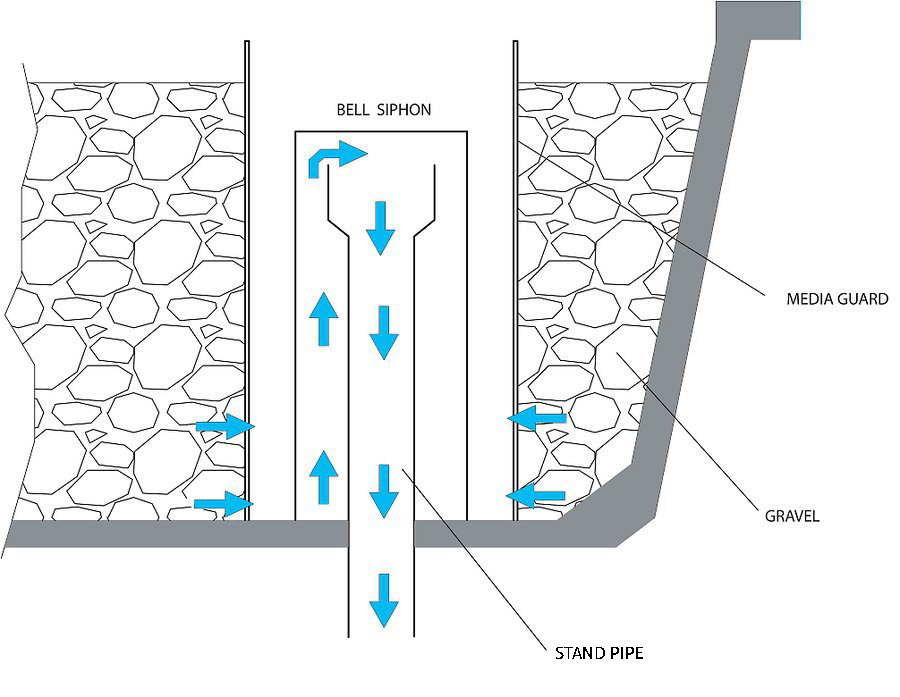
The pressure of the rising water forces the air out of the tube, allowing the water to fall back into your fish tank. As the water level lowers the air pressure builds back up in the siphon and stops the water flow.
It’s a very simple and extremely effective option.
- U siphon
This is generally a cheaper option but can be harder to get right. The idea is to have a tube coming up through the base of the growing container, this goes to the height that you want the water to get and then turns in a U shape, going down to the base of the tank. It can end on the flood or the growing container providing it has holes in the sides of the tube.

As the water in your growing container rises it will fill the U part of the tube, once it is high enough it will go over the ‘U’ and then down the pipe to the fish tank.
If you want to keep a little water in the bottom of the grow beds you’ll need to add a circular float to the pickup pipe. As this floats up the entrance to the U siphon will be uncovered and the water will start to enter.
- Timer
The third option is to use a timer that opens a valve, allowing the water to flow back into the fish tank. Of course, the immediate issue with this method is that the timer will rely on electricity and electronics; that’s an extra thing that can go wrong with your system.
In this type of system, you simply use the timer to pump water into the growing container until it’s full. After it’s full you open the valve electronically, so the water drains back to the fish tank via a simple pipe. Of course, the pump needs to put the water into the tank faster than it can drain out.
Sump or no Sump?
The sump tank is designed to help maintain the water level in your fish tank. In short, if the volume of your fish tank is the same as, or higher than the volume of your growing container, you shouldn’t need one.
For example, a 100-gallon fish tank feeding a 100gallon grow bed will require roughly 40 gallons of water on each flood and drain cycle. Why? Because 60% of the volume of the growing container will be occupied by the growing media.
However, if the growing container is 100 gallons and your fish tank just 50 gallons, taking 40 gallons may not leave much for your fish. In this instance, you’ll need a sump tank.
In essence, a sump tank merely increases the water volume of your system. The water flows from the fish tank to the sump tank and then to the growing beds; ensuring you always have enough water.
Cycling Time
The consensus is to have the water in your fish tank to go once through your growbed every hour. In one day, the total amount of water in your fish tank should have cycled 24 times through the growbed.
This is to ensure that the ammonia gets converted to nitrates by the bacteria and that your plants get a consistent supply of nitrates. Read more about cycling here: aquaponics cycling.
Using a Split Flow?
You may come across the term split flow, especially if you’re looking at systems with a sump tank. The split flow simply allows you to pump the water in more than one direction at the same time.
If you have a sump tank you may not want to pump all the water from there into your grow beds. Instead, you can split the flow and pump some to your grow beds and some to your fish tank.
The reason for this is to allow the water to go through an aerator and increase the amount of oxygen available for your fish. It can also help to prevent the water level from getting too low in the fish tank, or regulate the filling speed of your growbed.
There are many different methods and techniques for running an aquaponics system. The flood and drain aquaponics system are the simplest and best for anyone starting up. Once you understand the basics you’ll be able to decide if you want to try different approaches.

Nick loves building, managing and giving others advice on aquaponics. He created this website to do just that. He is the author of Aquaponics for beginners. If you got a question contact him here or read more on the about page here.
